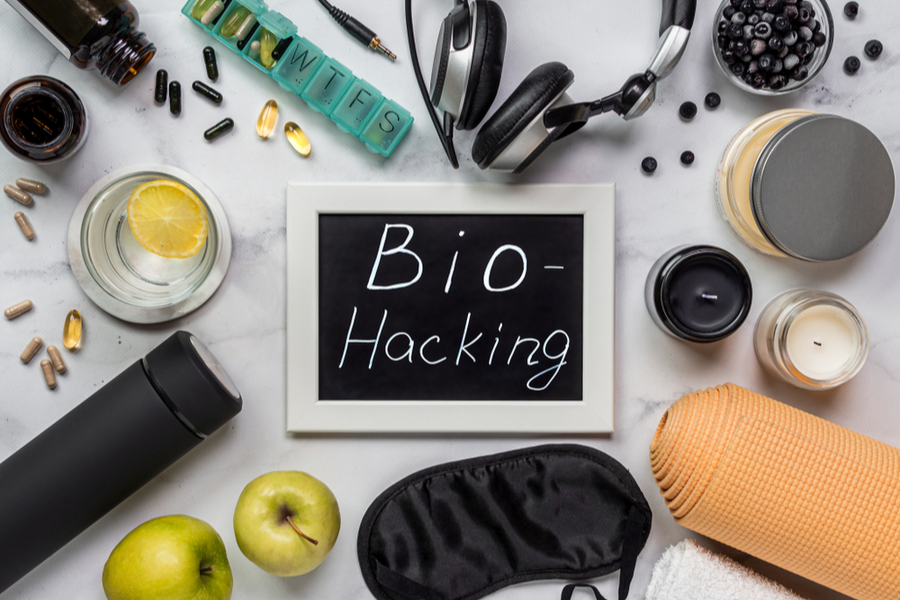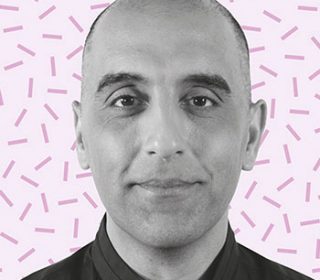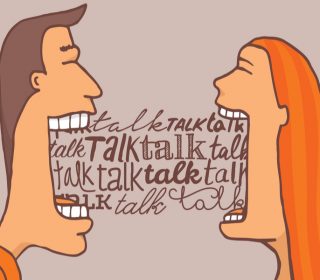Decode of conduct: Biohack your way to better health

From morning coffee lovers, to intermittent fasters, to implanters of microchips, anyone who wants to boost performance of body or mind through self-administered means can be classed as a biohacker.
Taking place outside conventional medical and scientific thinking, it’s an increasingly popular idea. By 2025, the human augmentation market will enjoy a more than 10-fold increase, boosting its value to £1.8bn, according to research firm OG Analysis.
In the world of computer hacking, a “white hat” operator looks for a system’s flaws and instead of exploiting them, discusses them openly with the owner so they can improve them (in return for a sizeable fee, of course). Biohackers do the same with the human body, targeting weakness in physical, biological and mental performance and treating them with smart drugs, music, mechanical parts, electronic devices, light therapy and, yes, coffee.
On one level, biohackers are saying nothing new. Treating the body as a system of inputs and outputs is something most of us do naturally, or at least know we should do. But biohackers are at the forefront of a cutting-edge movement, looking to go beyond existing parameters.
They often employ the tools of citizen science, where volunteers and amateur scientists gather, share and openly analyse data to study problems they feel mainstream science is unwilling, unable or too slow to investigate. Some even go way beyond mind and body hacks into the realms of robotics, extreme life extension and immortality.
RISE OF THE MACHINES
For his book To Be A Machine, Mark O’Connell spent 18 months meeting biohackers of all stripes but in particular, transhumanists, who think our best option for longer, better lives is to be more like machines.
“The people I met shared a mechanistic and instrumentalist view of human life,” says Mark. “I realised early on transhumanists were not simply people who want to become machines, but already thought of themselves as machines.”
For lesser mortals, the idea of being more like a machine seems like something straight out of science fiction. But in Sweden, 4,000 people have had a microchip the size of a grain of rice implanted in their hands to use instead of keycards, travelcards and to make payments.
In 2018, US vending machine company Three Square Market encouraged its employees to chip themselves so they could log on to their computers, open doors and, of course, use the company’s vending machines. On the first day of chipping, 50 of its 80 employees grabbed a piece of the future.
Hardware upgrades like this are for biohackers with more faith in machine than man. The opposite, wetware (or the augmenting of body chemistry), tends to have greater appeal. After all who wouldn’t want to take the sort of smart drug that makes Bradley Cooper’s character in Limitless finish his novel, beat the stock market and learn to speak Mandarin?
IN WITH THE NOO(TROPICS)
The amazing effect of the drug used in that film is counter-balanced by severe side effects. In real life, nootropics, drugs which may enhance cognitive function, have positive and lesser effects at much lower levels. Caffeine and nicotine fall into this category, as do amphetamines and several drugs prescribed to treat ADHD. Analysis of clinical trials has shown these enhance cognitive function on some small level.
Non-clinical trials of psilocybin, the active ingredient in magic mushrooms, and LSD are showing, on an anecdotal level only, a greater boost to cognitive function and very few side effects. These hackers might be breaking the law (buying and taking illegal drugs), but many share details of their behaviour in detail in controversial citizen science projects.
Beyond legality, biohacking raises ethical points, too. Should you take something to make you better if you’re already healthy? Is the “better” reported by biohackers actually “better” for you? Anyone can read data and make a judgement call as to what’s best for them, but the data may not have been checked in rigorous trials carried out in ways acceptable to the scientific community.
COMMUNITY CHANCE
One figurehead of the biohacking movement is Dave Asprey, who developed and markets Bulletproof Coffee, which is made with butter and coconut oil and complements a high-fat, low-carb diet. Dave claims it boosts IQ, and has thousands of testimonials to back him up, but his critics say it’s a caffeine diet. His dietary suggestions also include intermittent fasting, another increasingly popular biohack that many claim results in long-term steady weight loss. However, few trials prove long-term benefits.
Low-level light therapy, known as photobiomodulation and laser therapy, is another movement on the rise. Most people know controlled exposure to sunlight provides vitamin D, and the detrimental effects of smartphone ‘blue light’ are common knowledge. But are other kinds of light good or bad for us? Non-clinical experiments involving red light have led to claims it relieves pain and aids healing in skin and soft tissue, and more people are making choices based on raw data from these sources.
A few years ago, the Massachusetts Institute of Technology (MIT) held its second Global Summit on Community Biotechnology, a forum to, “provide a space for DIY biologists, biohackers, biomakers and members of independent and community laboratories to plan, build fellowship, and continue the evolution of our movement.” Attendees included doctors and PhDs, owners of start-ups and academics who want their work verified and proven in clinical trials. Their work is modelled on accepted scientific practice.
Biohackers document everything in open data stores – good, bad, side effects and benefits. For many, this makes them more trustworthy than big pharma companies or traditional models of practicing medicine, but increasingly, it points to more options for people who want to improve themselves. Are we all biohackers? That’s entirely up to you.
SO YOU WANT TO BE A BIOHACKER?
Want to tap into your grey areas? Then it’s smart to put safety first
BE SMARTER
You need to know everything about any potential biohack you want to experiment with. Openness and innovation do not necessarily go hand in hand with safe and ethical thinking, so seek out scientific papers and/or certifiable information from credible media sources that can back up claims.
BE OPEN AND SHARE
Document everything about the biohack you undertake, especially if others are doing so; you can remain anonymous and still provide the data. Excellent journalling and note-taking apps include Bear, Day One and Evernote. Fans of pen and paper might like to look at the Bullet Journal method of note-taking, which has a huge number of passionate fans.
BE HONEST
As with any large change to diet or lifestyle, it’s important to speak with a medical professional before embarking on any form of biohacking. They have all the necessary training to provide you with the base knowledge you may not possess.








